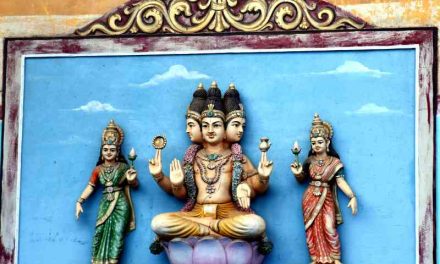The Vamana Purana is one of the 18 major Puranas of Hinduism, named after the dwarf avatar of Vishnu who took back the three worlds from the demon king Bali by taking three steps. The text is considered a Shaiva text, as it mainly glorifies Shiva and his sacred places in India. It also contains chapters that revere Vishnu and other gods and goddesses.
The text is predominantly a collection of Mahatmyas (glories) of various Tirthas (places of pilgrimage) that are associated with Shiva and his legends. In this blog post, we will explore some of the places of pilgrimage mentioned in Vamana Purana and their significance.
Kashi
Kashi, also known as Varanasi or Banaras, is one of the most ancient and sacred cities in India, located on the banks of the river Ganga. It is regarded as the city of Shiva, where he resides with his consort Parvati. The Vamana Purana describes Kashi as the best among all Tirthas, where even a moment’s stay can grant liberation from the cycle of birth and death.
The text narrates various stories related to Kashi, such as how Shiva created it by his own light, how he manifested himself as the Jyotirlinga named Vishwanatha, how he protected it from the wrath of Brahma, how he bestowed his grace on various devotees like Divodasa, Bhagiratha, Mandhata, and others. The text also mentions various temples, ghats, wells, and ponds in Kashi that are sacred to Shiva and his aspects.
Kedarnath
Kedarnath is a mountainous region in the Himalayas, where Shiva is worshipped as Kedarnatha, the lord of Kedar. It is one of the 12 Jyotirlingas and one of the four sites of the Char Dham pilgrimage. The Vamana Purana narrates how Shiva assumed the form of a bull and hid in Kedarnath to escape from the Pandavas, who were seeking his forgiveness for killing their kinsmen in the Kurukshetra war. The text also describes how Shiva blessed Nara and Narayana, the twin sages who performed penance at Badrikashrama near Kedarnath, and how he granted them a boon to be born as Arjuna and Krishna respectively.
Gaya
Gaya is a city in Bihar, where Shiva is worshipped as Gaya-natha or Gaya-shisha, the lord or head of Gaya. It is a famous place for performing Shraddha (rituals for the ancestors) and Pinda-dana (offering of rice balls). The Vamana Purana narrates how Shiva cut off the head of Gayasura, a demon who had performed severe austerity and obtained a boon that whoever sees him or touches him would attain liberation.
Shiva did this to save the world from being devoid of Dharma (righteousness), as no one would perform any good deeds or worship any gods if they could get liberation easily. Shiva then placed Gayasura’s head at Gaya and made it a holy place for offering Pinda-dana to the ancestors.
Prayaga
Prayaga, also known as Allahabad or Prayagraj, is a city in Uttar Pradesh, where the confluence of three rivers – Ganga, Yamuna, and Saraswati – takes place. It is also known as Triveni Sangam or Tirtha-raj (the king of Tirthas). The Vamana Purana describes Prayaga as a place where Shiva performed penance for 10,000 years after killing Daksha’s sacrifice. He then created a Linga named Alopi-natha or Madhyameshvara at Prayaga and declared it as his favorite abode. The text also mentions various other shrines and Tirthas at Prayaga that are dedicated to Shiva and his aspects.
Kurukshetra
Kurukshetra is a region in Haryana, where the epic battle of Mahabharata took place between the Pandavas and the Kauravas. It is also a place where Krishna delivered his teachings to Arjuna in the form of Bhagavad Gita. The Vamana Purana devotes a large section called Saro-mahatmya to describe the glory of Kurukshetra and its various lakes, rivers, and forests that are sacred to Shiva and other gods.
The text narrates how Shiva appeared as a beggar and tested the generosity of the Pandavas and the Kauravas, how he blessed Bhisma with the boon of choosing his time of death, how he granted a vision of his cosmic form to Arjuna, how he protected the Pandavas from various dangers and enemies, and how he presided over the Mahabharata war as the witness and the judge.
These are some of the places of pilgrimage mentioned in Vamana Purana that reflect the devotion and reverence for Shiva and his manifestations. Visiting these places can help one to attain spiritual benefits and blessings from Shiva and other gods. The Vamana Purana also encourages one to perform various rituals, worship, charity, and meditation at these places to please Shiva and attain his grace.
Works Cited:
(1) Vamana Purana – Wikipedia. https://en.wikipedia.org/wiki/Vamana_Purana
(2) Vamana Purana – Vyasa Mahabharata. https://www.vyasaonline.com/vamana-purana/
(3) Vamana Purana – IndiaNetzone.com. https://www.indianetzone.com/13/vamana_purana.htm.





